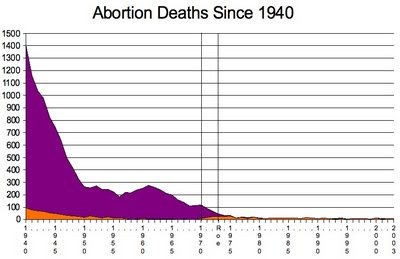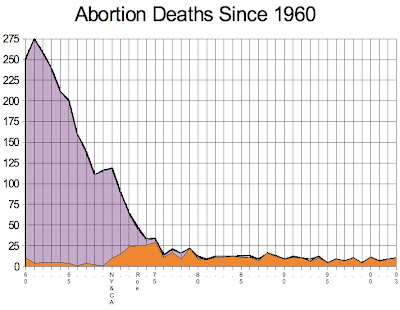NEW YORK, September 23 (C-FAM) Medical experts blasted the UN’s “abortion-first” approach in a maternal-health presentation to UN delegates last week. Coming on the eve of a UN summit on development issues, the expert panel urged governments to focus on basic medical care rather than abortion to reduce pregnancy-related deaths.
“It is egregious to suggest to mothers that the only way to save their lives is to kill their babies," said Dr. Robert Walley, head of MaterCare International. "They have the right to health care. They have no voice when they are dead."
Controversy has dogged the maternal health goal since heads of state established it at the Millennium Summit in 2000. The heads of state explicitly rejected language used by many Western countries to mean abortion, despite intense lobbying for its inclusion at that time and at the subsequent 2005 follow up summit. Even so, subsequent UN-sponsored meetings like the Women Deliver conference in May focused almost exclusively on access to abortion as the way to improve maternal health.
Panelists last week criticized the World Health Organization (WHO) for insisting that as long as an abortion is legal, it would always be considered "safe”. The WHO definition of abortion as unsafe or safe is not a medical but legal definition, said Dr. Donna Harrison, an OB/GYN. By contrast, if a country prohibits abortion, any abortions or related complications are automatically categorized as "unsafe," Harrison said.
Harrison, president of the American Association for Pro-Life Obstetricians and Gynecologists, said WHO and other UN bodies are being dishonest in campaigning for legalized abortion worldwide by hiding behind the pretext of "safe" abortion.
In another blow to the argument that abortions help reduce pregnancy-related deaths , Dr. Elard Koch concluded from government data going back 100 years that Chile’s maternal-death rate continued to fall even after the government banned abortion.
Increasing education levels, maternal literacy rate and maternal health services appear to be the most important factors in lowering maternal deaths, said Koch, an epidemiologist at the University of Chile. Legal access to abortion is not important, as advocates have claimed.
Health systems in developing countries are failing because the focus has been shifted to “reproductive health,” according to Dr. Obi Ideh, an OB/GYN practicing in Nigeria. The failures can be linked to corruption, lack of community-based healthcare, and incomplete medical data that prevent women from getting the care that they require.
Ideh emphasized the need to strengthen family, community and cultural factors as the first-line support for poor mothers and to increase training and staffing of health facilities to combat maternal deaths.
In a passionate account of his work with MaterCare, Dr. Walley described a post-earthquake Haiti where mothers were forced to give birth to their babies “in a toxic soup of rainwater and sewage.” Walley called for the international community to meet its responsibilities to poor mothers in emergency situations in the developing world.
The panel was organized by a coalition of pro-life advocacy groups and hosted by the governments of the Philippines and Malawi.
Experience in the US has likewise shown that addressing nutrition, sanitation, and overall good health are what bring down maternal mortality. The legalization of abortion didn't even make a visible blip on maternal mortality numbers:
This is all maternal deaths, from abortion, miscarriages, ectopic pregnancies, complications of childbirth, and so forth. You can see that the 20th Century got off to a good start, improving maternal health, but that trend would later level off, and then reverse itself temporarily, before taking the downward trend that would continue for the rest of the century. I've put a vertical line at Roe vs. Wade, so we can see the clear, unmistakable, undeniable, staggering and spectacular impact ready access to safe, legal abortion had on maternal mortality:

For those of you with a faulty sarcasm detector: Roe didn't even amount to a blip on the line.
For those of you who get your information from abortion lobby "fact sheets" this might come as a bit of a shock. You're accustomed to being told things like: "The legalization of induced abortion beginning in the 1960s contributed to an 89% decline in deaths from septic illegal abortions (15) during 1950-1973." (Courtesy, in this case, of the Centers for Disease Control -- for those of you who had any doubts as to their abortion-praising agenda.)
Let's look specifically at abortion mortality, to see the profound and clear and unmistakable impact of legalization. I marked vertical lines at 1970 (when New York and California became the first states to legalize abortion on demand) and 1973 (when Roe vs. Wade legalized abortion on demand nationwide).

If you're having a hard time spotting it, I'll zoom in a bit on abortion deaths since 1960. Note that I marked New York and California's legalization and Roe vs. Wade for you:

The things put forth by abortion advocacy organizations leave you with the impression that improvement in maternal health in general, and abortion mortality in particular, must be due to the ready availability of legal abortion. But if you look at maternal mortality, as we just did, and look at the legalization of abortion, as we just did, you can see that the dramatic and very laudable drop in maternal death in the 20th Century was achieved with no help whatsoever from the abortion lobby.
They just take credit for other people's hard work.
7 comments:
You've done it again! The Maternal Mortality rate chart is per '100,000 LIVE BIRTHS' - it does NOT include abortions, miscarriages and such.
So your whole premise is flawed, again! Everything else you say which you hang off this is fallacious.
The WHO is talking about abortion in Third World countries, not in USA. Illegal abortions in the industrialized world are much less dangerous than they are in the Third World. Therefore, legallizing abortion and making abortions more available would likely prevent much more maternal mortality in the Third World than here.
OC, would you tell Rupert (since he may listen to you, since you are both in agreement on abortion) that ALL DEATHS from maternal mortality are included in the numerator, regardless of how the pregnancy terminated (whether live birth, still birth, miscarriage, or induced abortion), whereas only live births are included in the denominator?
This means, Rupert, that if a woman dies of an ectopic pregnancy at 8 weeks gestation or from an induced abortion at 8 weeks, her death will be counted in the MMR, even though her baby will not be counted in the denominator. If you want to complain about it, talk to the WHO, the CDC, the UN, and the various ob-gyn organizations around the world, to see if they can't come up with a better system. Until then, quit whining and learn how to navigate the system.
It's what has been used for decades, and is considered standard. When abortion advocates like you complain about women who die from abortion, where do they get their statistics? Yup, the MMR. Sometimes the MMR is subdivided into different groups, such as "deaths from induced abortion," (whether legal or illegal), which is how Christina came up with her pretty little purple and orange charts.
The fact is, maternal mortality in the US, which was similar to many countries' MMRs of today, dropped dramatically even though abortion remained very much illegal -- from 600-900/100,000 from 1915-1935 to about 20/100,000 in 1970. If you look at only abortion deaths (the last two charts), you'll see that deaths due to induced abortion only -- not counting other maternal deaths -- dropped dramatically from 1940-1970, just like total maternal mortality fell during that same time-span.
Now, the MMR is a *rate*, and the bottom two charts show actual *numbers*; but it's not meaningless just because it doesn't show the number of abortions. All you have to do is come up with statistics of how many abortions (legal and illegal) were performed during this time span, and divide it by the number of maternal deaths from abortions (legal and illegal), and you get your own handy-dandy abortion mortality rate. Since the number of abortion deaths dropped prior to legalization, that either means that the number of abortions also dropped while the rate of abortion maternal deaths remained the same; or that the rate of abortions remained the same, while the rate of abortion maternal deaths dropped; or possibly a combination of those two factors.
~*~
OC, you're wrong that legalization abortion in these Third-World countries will make it safe. Women who are dying in these countries due to infection and hemorrhage, brought about by illegal abortion, will still die from infection and hemorrhage, brought about by legal abortion. Legalizing abortion does not make antibiotics appear out of nowhere, nor does it magically give access to safe blood transfusion.
Kathy, the graph says 'per 100,000 live births'. Therefore the capture of abortion versus delivery mortality rates are not presented. The CDC site extrapolates extensively on this. The bottom line is that GG's summation is invalid.
Rupert, live births is used as a denominator because they're readily countable. Unless you're claiming that since stillbirths and women who die without giving birth at all aren't being counted.
Her "summation" is that both maternal mortality (from all causes) and induced-abortion mortality both dropped precipitously while abortion was still illegal. Do you dispute that? If so, where are your facts?
Post a Comment